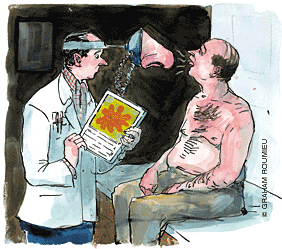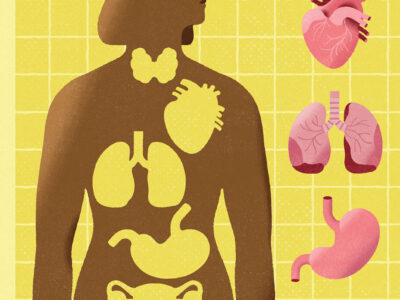
Research | If a patient has pneumonia, the sooner she’s on antibiotics the better. But how to tell for sure? Thanks to Penn researchers, doctors may one day be able to sniff out the answer to this and other medical puzzles with an electronic nose.
In two studies conducted with patients on ventilators in the surgical intensive-care unit, an e-nose device (called the Cyranose 320) quickly diagnosed pneumonia, a potentially life-threatening respiratory infection. In one study it was accurate 92 percent of the time; in another study, 70 percent.
“The sense of smell has been used since the dawn of physicians,” says Dr. C. William Hanson III, a professor of anesthesia who was co-principal investigator in charge of the pneumonia studies. “Ancient physicians used to describe the odor of certain diseases.”
Several years ago Hanson saw a description in The Wall Street Journal of an e-nose device that was being manufactured for applications such as detecting food spoilage and comparing batches of perfume. “I read this and thought it would be an ideal tool for a medical diagnosis. So I contacted one of the companies and asked if we could borrow one of their noses. We’ve been using noses of one description or another since then for diagnosing respiratory infections.”
Dr. Erica Thaler, associate professor of otorhinolaryngology and the other co-principal investigator, conducted a third study with an e-nose device that detected bacterial sinusitis about 80 percent of the time. “A diagnosis about sinusitis is extremely hard to make; that’s why there’s a need for a diagnostic tool like this,” she says.
The e-nose is about the size of a portable cassette player. Exhaled gases from a human breath sample travel through an inlet port into the machine, where they pass over an array of sensors that respond to the molecules in a particular odor.
“The smell goes wafting by and binds variably with those sensors,” Thaler explains. “Sensor 1 may bind with molecule X; sensor 15 might not. That is a smell print for a given odor.” A diagnosis is then made by comparing the smell print with standardized readings.
Though both researchers cautioned that these are preliminary results, Hanson says, “I don’t think it’s unrealistic to think that something like this would be available in the doctor’s office as a screening tool for a number of diseases. We’re looking at something that’s quick, that’s painless, that’s inexpensive, to say, ‘This patient should be screened more thoroughly and more invasively.’”—S.F.




